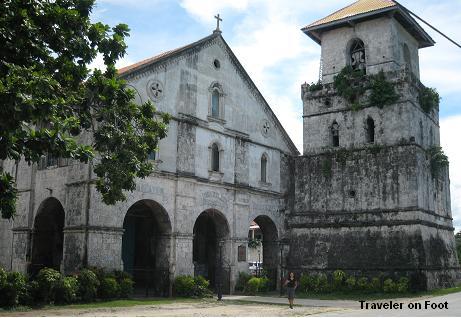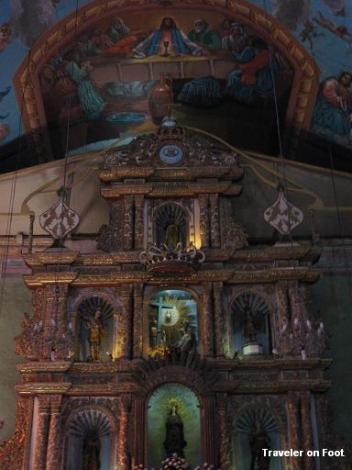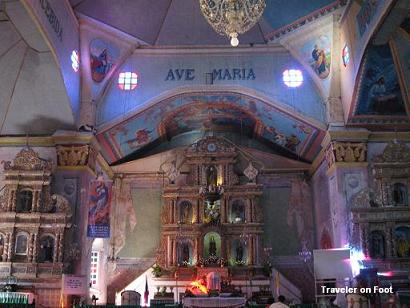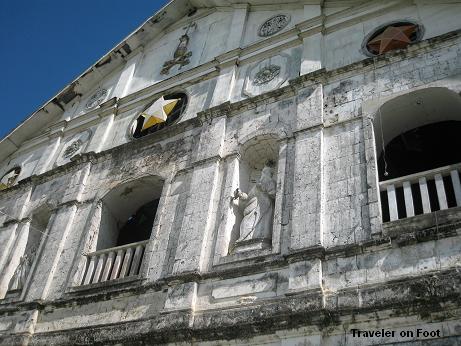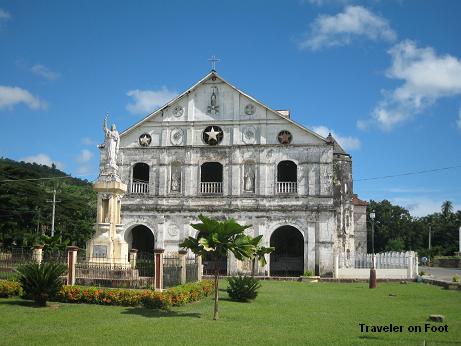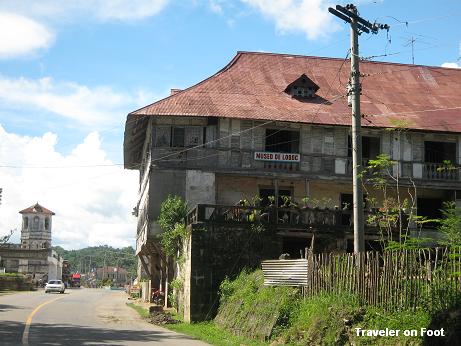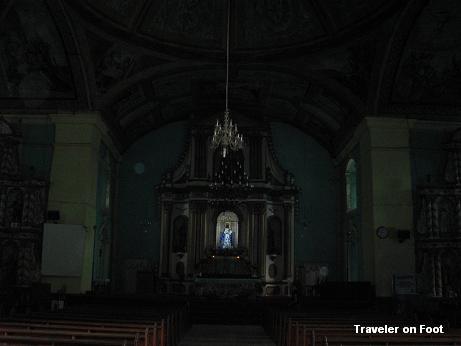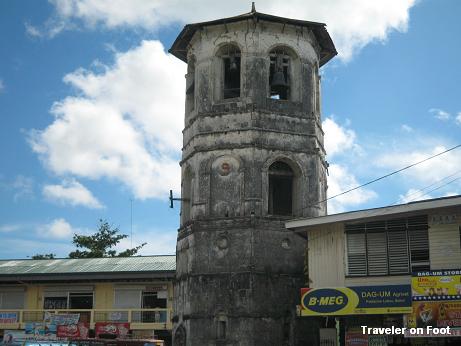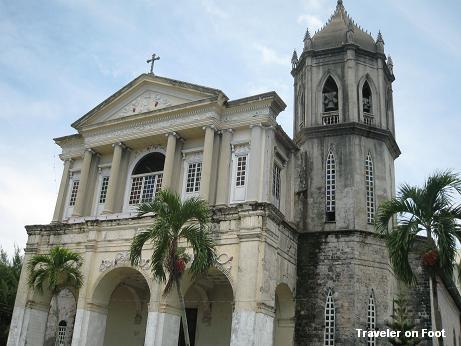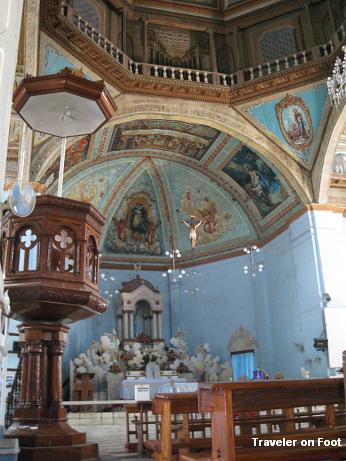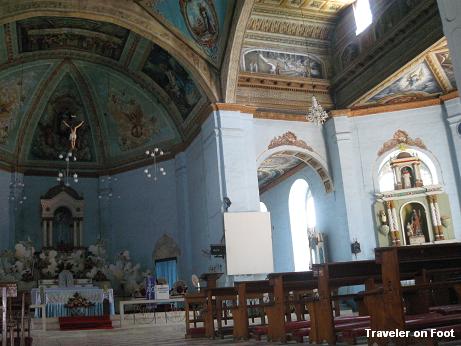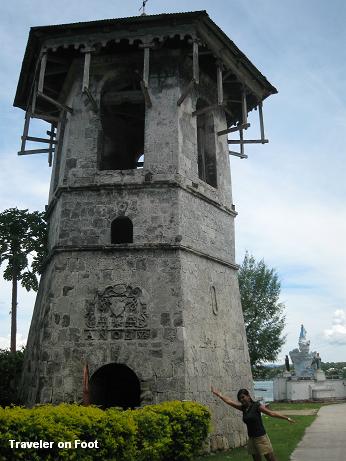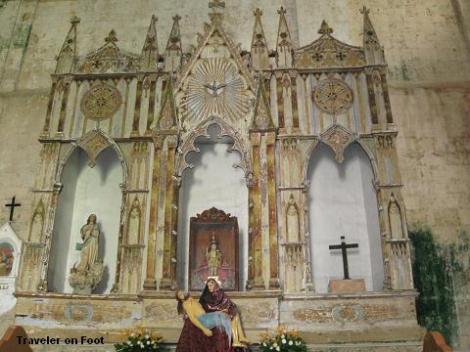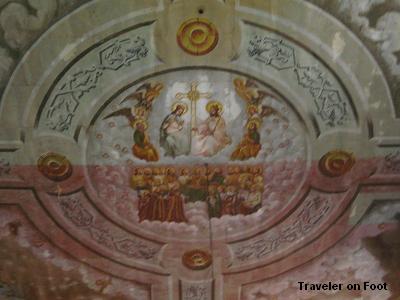CHURCH ART. The art heritage of Paete has been known for centuries in different parts of the world. Found in churches in the Americas and in Europe are masterpieces in forms of ecclesiastical decorations and furnishings. They are mostly centuries-old carvings on wood created by Paete’s legendary master carvers.
In the Philippines, the best examples of these masterful works are found in the town’s Catholic Church.


PAETE CHURCH. The town of Paete was founded in 1580 by Fray Juan de Placencia. The previous stone church has been destroyed three times by natural calamities. The present structure was built in 1884 but has been damaged again by an earthquake in 1937.
Looking at Paete’s centuries-old church from its courtyard, we immediately thought of it to be among the most florid in the country. Sculpted out of adobe, the church’s façade is embellished with florals, garlands, and curlicues.
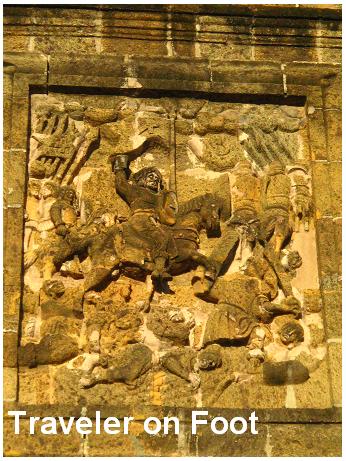
SANTIAGO MATAMOROS. Perched on the church’s topmost triangular pediment is a relief of St. James the Apostle as a warrior mounted on a horse, slaying the enemies. This familiar image of Saint James as Señor Santiago Matamoros is also found guarding the entrance of Fort Santiago in Intramuros.
Old timers claim that this gallant saint was responsible for guarding Paete against the raiders. It is said that he is seen as a Caucasian in a warrior suit, striding on a horse while overlooking the town from a hilltop. During World War II, the saint is said to have driven away the Japanese enemy who attempted to follow the townsfolk who run for safety in the nearby mountains while Paete was being burned.


ART HERITAGE OF PAETE. Inside the church is a gallery of religious art and antiquities. These church objects like statues and over-sized paintings were used by the friars as visual aids for teaching catechism to the native converts. Today, they are displayed inside the church not only as objects of devotion but conversation pieces that tell stories about centuries of artistry by the town’s homegrown artists and craftsmen.

SAN CRISTOBAL. For instance, the two murals depicting St. Christopher carrying the Child Jesus on his shoulder while crossing a river has an interesting story. The one painted directly on the adobe wall depicts the saint as a native in Moorish clothing. It is said that the friars did not like the painting on the church wall so the artist made another version of St. Christopher as a Caucasian in 16th century European clothing.
The newer painting was painted on wood. It was placed directly on top of the older painting. Saint Christopher as a Moro was forgotten for centuries until in the 1980s when the one painted on wood was taken down for cleaning.
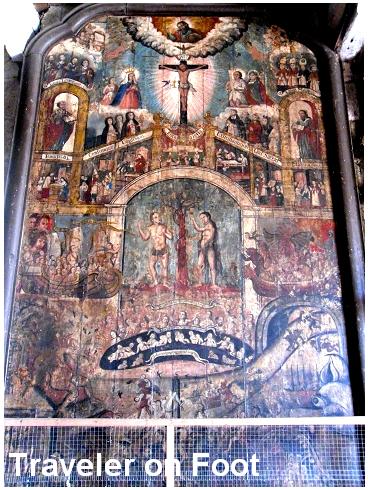
JOSE DANS. Equally impressive are the large paintings attributed to Jose Dans. This Paete-born artist was known for fashioning his brushes out of cat’s fur and for mixing pulverized volcanic ash with pigments for his paintings. In 1645, he painted two large paintings of scenes that seemingly straight out from Dante’s vision of heaven, hell, and purgatory.
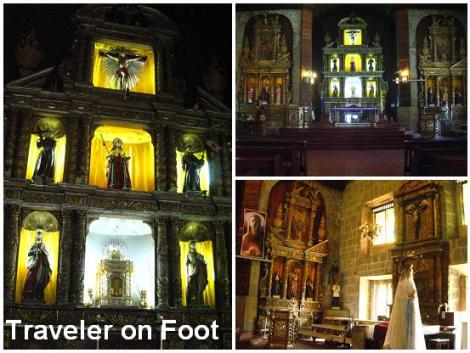
MISSING SANTOS. Paete’s legendary master carver Bartolome Palatino designed and carved the church’s retablos in 1840. Palatino did not use nails. The main and side altars were held together by wooden dowels. The three-storey main altar has niches containing the tabernacle and antique religious statues.
Sadly, there are stories that some of the church’s original artifacts were missing or have been replaced with newer ones. Learning stories about stolen or missing church treasure is heart-breaking. But it’s good to know that some artifacts remain intact inside the church. Thanks to those who have kept traditions alive, these artifacts are protected and preserved.

STO. ENTIERRO. One of the artifacts that is as old as the church itself is the Santo Entierro. During Holy Week, this ancient image of the dead Christ is bathed. The water used in bathing the image is distributed to the townsfolk who believe in its healing powers. After the bathing the image, it is placed in a tent filled with incense.
In the ritual called the Pasuob, the sick and the old take turns entering the tent in the belief that inhaling the fragrant smoke can heal sickness. This Lenten ritual is one of the major traditional activities held before Paete’s Grand Holy Week Procession.
-Feast of St. James the Apostle and St. Christopher | July 25, 2012


